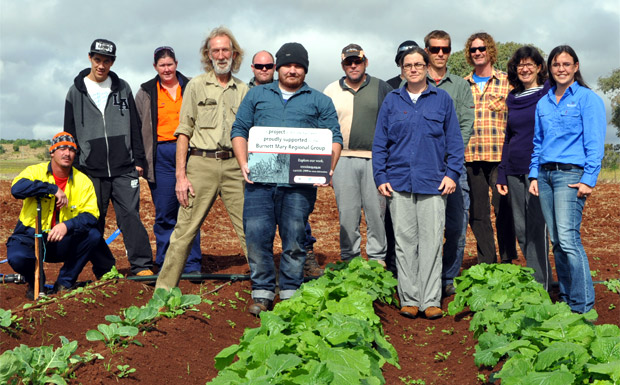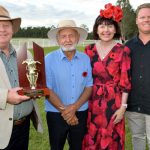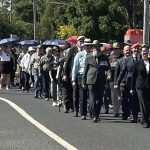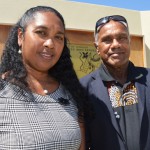
The Growing The Burnett horticulture project hit another milestone last week.
The project – which aims to expand food production options for South Burnett farmers, as well as fresh food choices for local consumers – recently installed a gravity-fed irrigation system on their Red Earth Farm at Memerambi thanks to a small grant from the Burnett Mary Regional Group (BMRG).
The irrigation system has allowed the farm’s horticultural trainees to plant 20,000 vegetable seedlings on a 1/2 acre set aside for the purpose.
All being well, Growing The Burnett hope to begin selling these freshly grown crops to South Burnett consumers in Spring through local markets and a road-side stand on their property.
Kay Enkelmann, from BMRG, said the irrigation system had been funded by the “Better Catchments” program, a BMRG initiative backed by the Federal and State governments designed to promote better water usage practices in local catchments, as well as help reduce salinity and soil erosion.
She said BMRG was impressed by Growing The Burnett’s focus on developing viable small acreage horticulture, and she was personally impressed by the irrigated gardens the group’s trainees had installed in a matter of weeks.
Growing The Burnett are currently mid-way through a 10-week training course instructing 11 local students in horticultural practices.
Project manager Brian Jarvis said the enthusiasm and dedication of the trainees was wonderful.
“So far, about six of our trainees have told us they’d like to stay with the project as share-farmers after their training course is over. And others have told me they want to put what they’ve learned into practice on their own operations,” he said.
“They’re a very enthusiastic group and right now our greenhouse is bursting with seedlings.”
The plants in the half acre garden cover a variety of common vegetables.
Apart from raising them from seedlings to maturity, part of the trial is to assess what grows well on the property; what insect and environmental problems each type of plant will encounter; and what methods can be used to overcome them.
“A certain amount of this is experimental,” Brian said.
“Over time we want to determine an optimum mix and best practices, because the end goal is to show people how they can build a good, reliable income off a small acreage farm.
“One challenge in the South Burnett is that we have many different micro-climates, and what works in one area may not work so well in another. But over time, with good record-keeping and a scientific approach, I’m sure we can come up with systems that will work in many different parts of this region.”
Apart from fresh food stands at local markets, the group also plans to hold an open day at the Red Earth Farm later this year so the public can inspect what Growing The Burnett does up close.
“We’ve had tremendous support for this idea from many different quarters,” Brian said.
“A lot of people a very interested in new approaches to farming, and that’s what we’re trying to develop here.”
Related articles:























